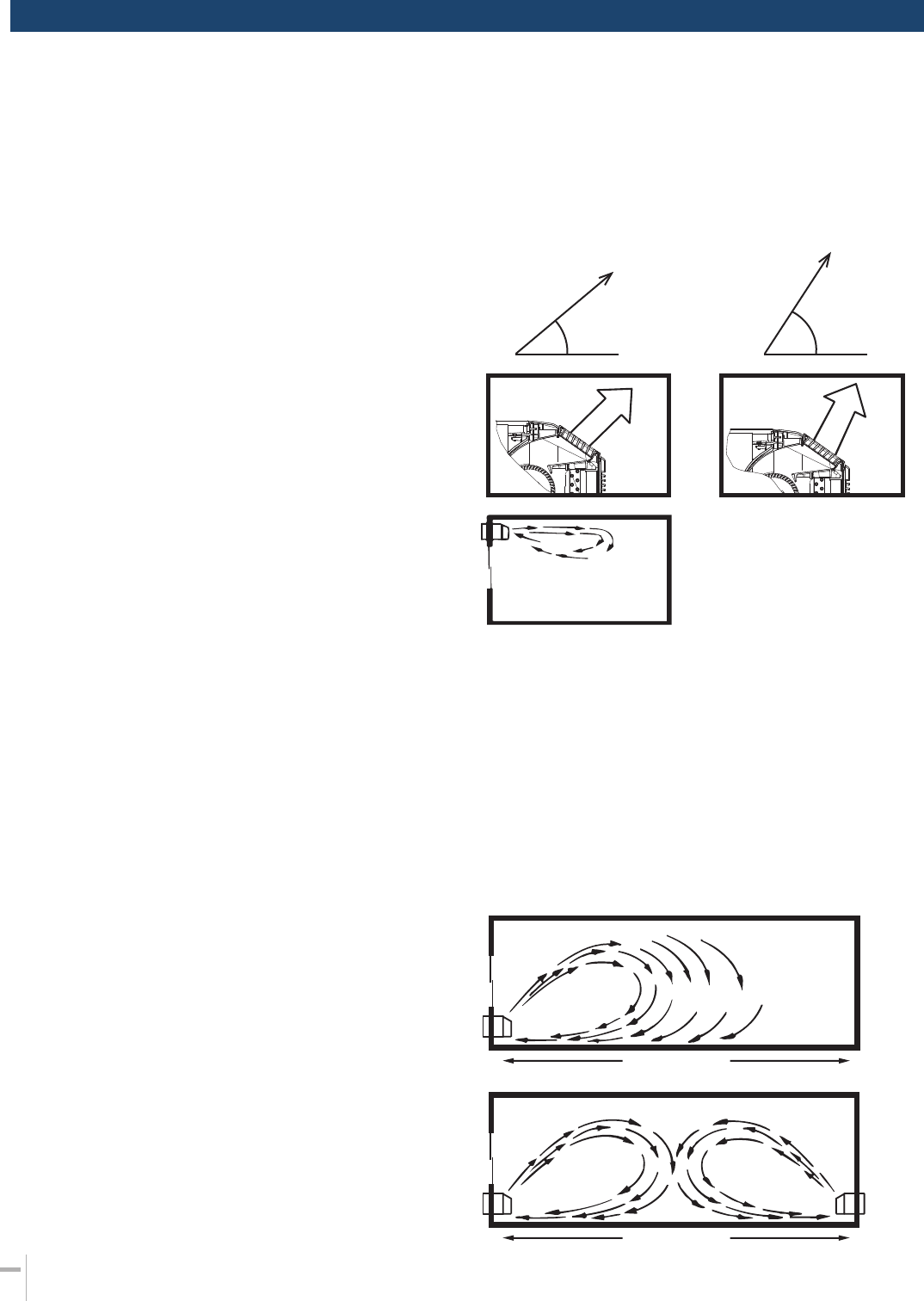Architect and Engineering Manual

22
It is important that any air conditioning system be
properly sized and applied in order to achieve the
desired temperature and humidity levels in the space to
be conditioned. Zoneline units are designed primarily to
provide heating and cooling with the additional benefit that
during operation in the cooling mode, the units also remove
some moisture from the conditioned space. The following
are some brief application comments on undersizing,
oversizing, heating, wall coverings, and air infiltration: all
are important in the proper matching of the heating/air
conditioning system to the building structure.
UNDERSIZING
Cooling: If an air conditioner is undersized (cooling capacity
is less than required for a specific application), the unit will
typically not be able to cool the space down to the desired
temperature (thermostat set point), nor be able to remove
enough moisture from the air. The result could be a warm
and humid or warm and dry conditioned space.
Heating: Undersizing can result in not being able to maintain
the desired temperature level within the conditioned space.
OVERSIZING
Cooling: If an air conditioner is oversized (cooling capacity
is greater than required for the specific application), the
unit will typically cool the space down to the desired
temperature (thermostat set point) too quickly. Since
dehumidification only takes place when the compressor is
operating in the cooling mode, typical result in a hot/humid
climate could be a cool but excessively humid space.
Wall Covering: Use of non-permeable wall coverings (some
paints, some wallpapers, and other types of coverings)
which severely restricts passage of air or water vapor can
cause a severe moisture problem. Typical results could be
staining of room surfaces, wall damage, as well as mold and
mildew growth in hot/humid climates.
Air Infiltration: Excessive air infiltration can magnify
problems associated with undersizing or oversizing of an
air conditioner unit and can be the root cause of insufficient
cooling, dehumidification or heating problems. Some
sources of air infiltration include vents, gaps around
windows and doors, and improperly sealed floor, ceiling
and wall joints.
Recommendation: For the above reasons it is strongly
recommended that a professional engineer be retained
to match the size of the Zoneline unit with the building
structure.
AIR DISTRIBUTION
Zoneline packaged terminal air conditioners and heat
pumps discharge air from the top of the unit through
reversible two-position discharge louvers. Unit discharge
louvers are reversed by removing the room cabinet
from the unit, removing four screws that hold the louver
section in place; removing the louver section and rotating
it end for end, reinstalling the louver section with the four
screws, and reinstalling the room cabinet on the unit. The
unit is shipped from the factory with the discharge louvers
at an angle of 45° off horizontal. In the alternate position,
the louvers will be at an angle of 65° off horizontal.
All room cabinets return air through the front of the unit.
High Wall Mount: For units
mounted high in the wall, the
discharge louvers should be
at a setting that provides the
most horizontal air discharge.
Recommended installation is
at least 3" below the ceiling.
In installations where units are close to the ceiling, the
greatest horizontal discharge angle can be obtained
by removing the discharge grille from the room cabinet.
For best room control, a remote wall thermostat
is recommended.
Supply Air Throw: One Zoneline unit should not be
required to do a job obviously requiring two or more
units. Units should be located around large rooms
according to calculated loads or in such fashion as
to achieve balanced air distribution in all parts of the
room. The single unit in the “Incorrect” illustration below
obviously cannot condition the entire room. Add a second
unit as shown in the “Correct” illustration.
OVER 40 FT.
CORRECT
OVER 40 FT.
INCORRECT
45° 65°
45° 65°
APPLICATION COMMENTS










